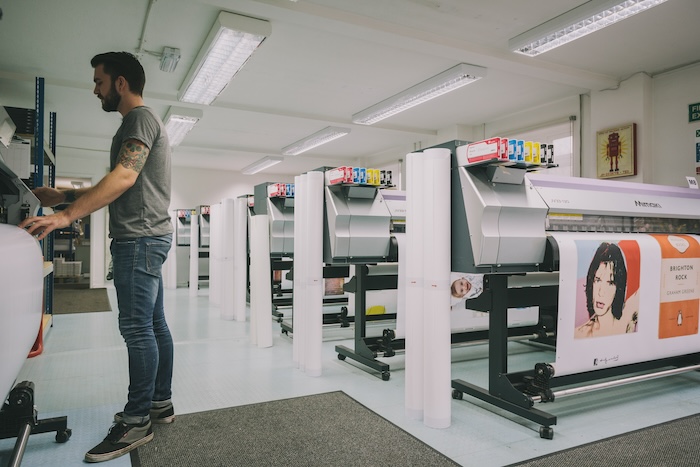Digital vs. Offset Printing: What’s Best?
In this blog, we will explore the differences between digital vs. offset printing to help you determine which method is best for your needs. When it comes to printing projects, choosing the right printing method can make a significant difference in the quality, cost, and turnaround time of your final product. The two most common printing methods are digital and offset printing. Each has its own advantages and disadvantages, making them suitable for different types of projects.

Understanding Digital Printing
Digital printing is a modern printing method that uses digital files, such as PDFs or graphic design software files, to directly print onto the paper. This process is similar to how a standard home or office printer works but on a much larger and more sophisticated scale.
Advantages of Digital Printing
- Quick Turnaround Time: Digital printing requires minimal setup, making it ideal for projects that need to be completed quickly.
- Cost-Effective for Short Runs: For smaller quantities, digital printing is more cost-effective as it does not require the setup of printing plates.
- Customization: Digital printing allows for easy customization and personalization of each printed piece, such as variable data printing for direct mail campaigns.
- Less Waste: Since there is no need for printing plates, digital printing produces less waste and is more environmentally friendly.
Disadvantages of Digital Printing
- Cost for Large Runs: For larger quantities, digital printing can become more expensive per unit compared to offset printing.
- Limited Color Range: Digital printing may not match the color range and vibrancy that can be achieved with offset printing.
- Quality Differences: While digital printing quality has improved significantly, it may still not match the high quality of offset printing for certain projects.
Understanding Offset Printing
Offset printing, also known as offset lithography, is a traditional printing method that involves transferring ink from a printing plate to a rubber blanket and then onto the printing surface. This method is commonly used for high-volume printing projects.
Advantages of Offset Printing
- High-Quality Output: Offset printing provides superior print quality with sharp, clean images and text.
- Cost-Effective for Large Runs: For large quantities, offset printing is more cost-effective due to the lower cost per unit.
- Wide Color Range: Offset printing offers a wider color range and better color accuracy, making it ideal for projects that require precise color matching.
- Versatility: Offset printing can be used on a variety of materials, including paper, cardboard, plastic, and more.
Disadvantages of Offset Printing
- Longer Setup Time: Offset printing requires the creation of printing plates and setup time, making it less suitable for projects with tight deadlines.
- Higher Initial Costs: The setup costs for offset printing can be high, making it less cost-effective for small print runs.
- Less Customization: Customizing each piece in a print run is more challenging and costly with offset printing.
Choosing the Right Method for Your Project
When deciding between digital and offset printing, consider the following factors:
Quantity
- For small to medium print runs (under 500-1000 pieces), digital printing is usually more cost-effective and quicker.
- For large print runs (over 1000 pieces), offset printing is typically more economical and offers better quality.
Turnaround Time
- If you need your printed materials quickly, digital printing is the best option due to its fast setup and production time.
- If you have a longer lead time and require high-quality output, offset printing may be the better choice.
Customization
- If your project requires personalization or variable data printing, digital printing is the ideal choice.
- For projects that do not require customization and need consistent quality, offset printing is suitable.
Budget
- For projects with a limited budget, digital printing is cost-effective for short runs and offers good quality.
- For larger budgets and high-volume projects, offset printing provides excellent quality and lower costs per unit.
Digital vs. Offset Printing: Conclusion
Choosing between digital and offset printing depends on various factors such as quantity, turnaround time, customization needs, and budget. By understanding the advantages and disadvantages of each method, you can make an informed decision that best suits your project requirements.
For professional advice and high-quality printing services, contact Automation Graphics.
Automation Graphics Inc.
(646) 205-3037
